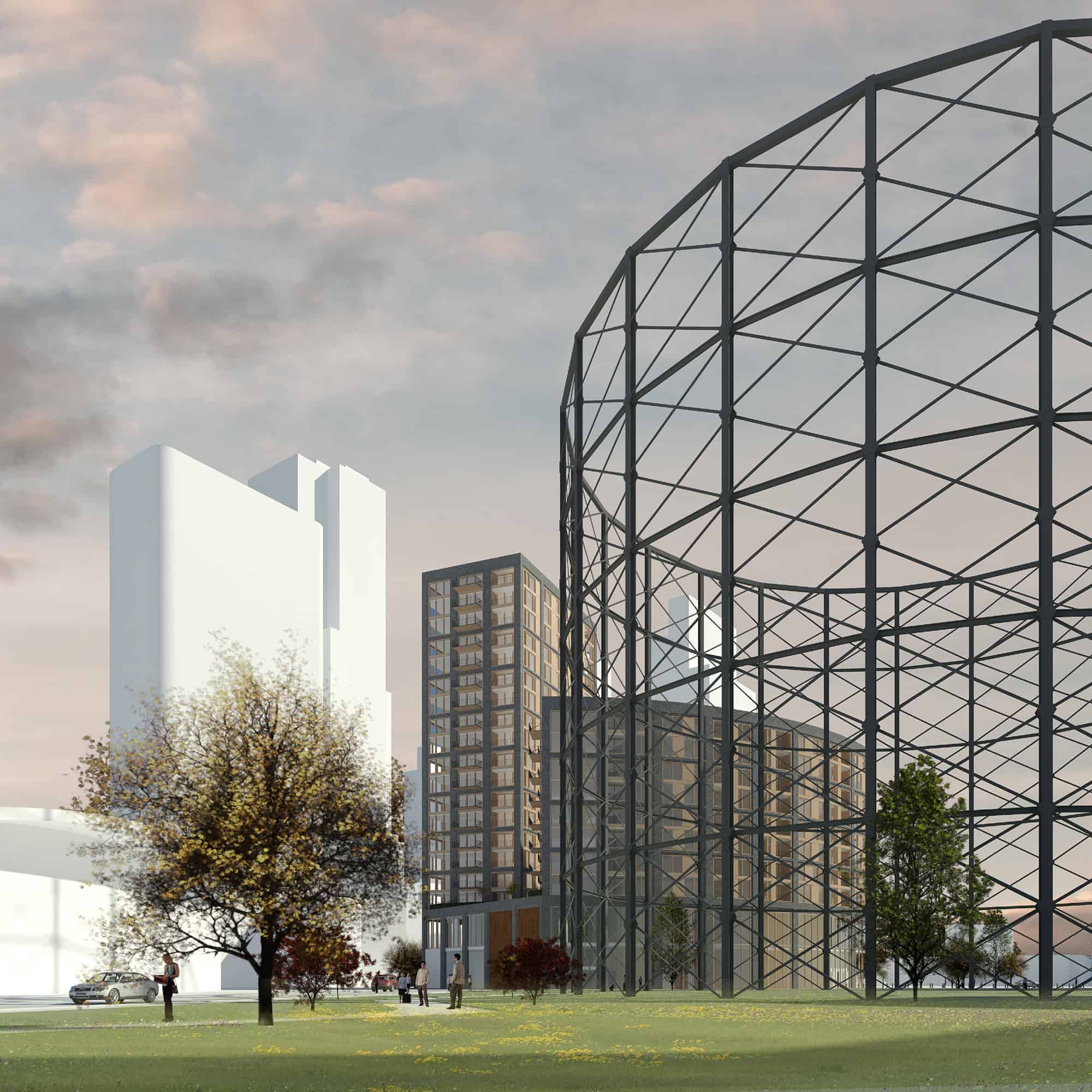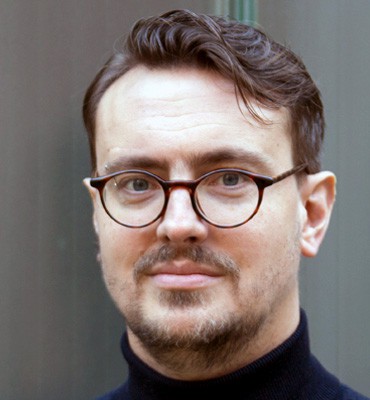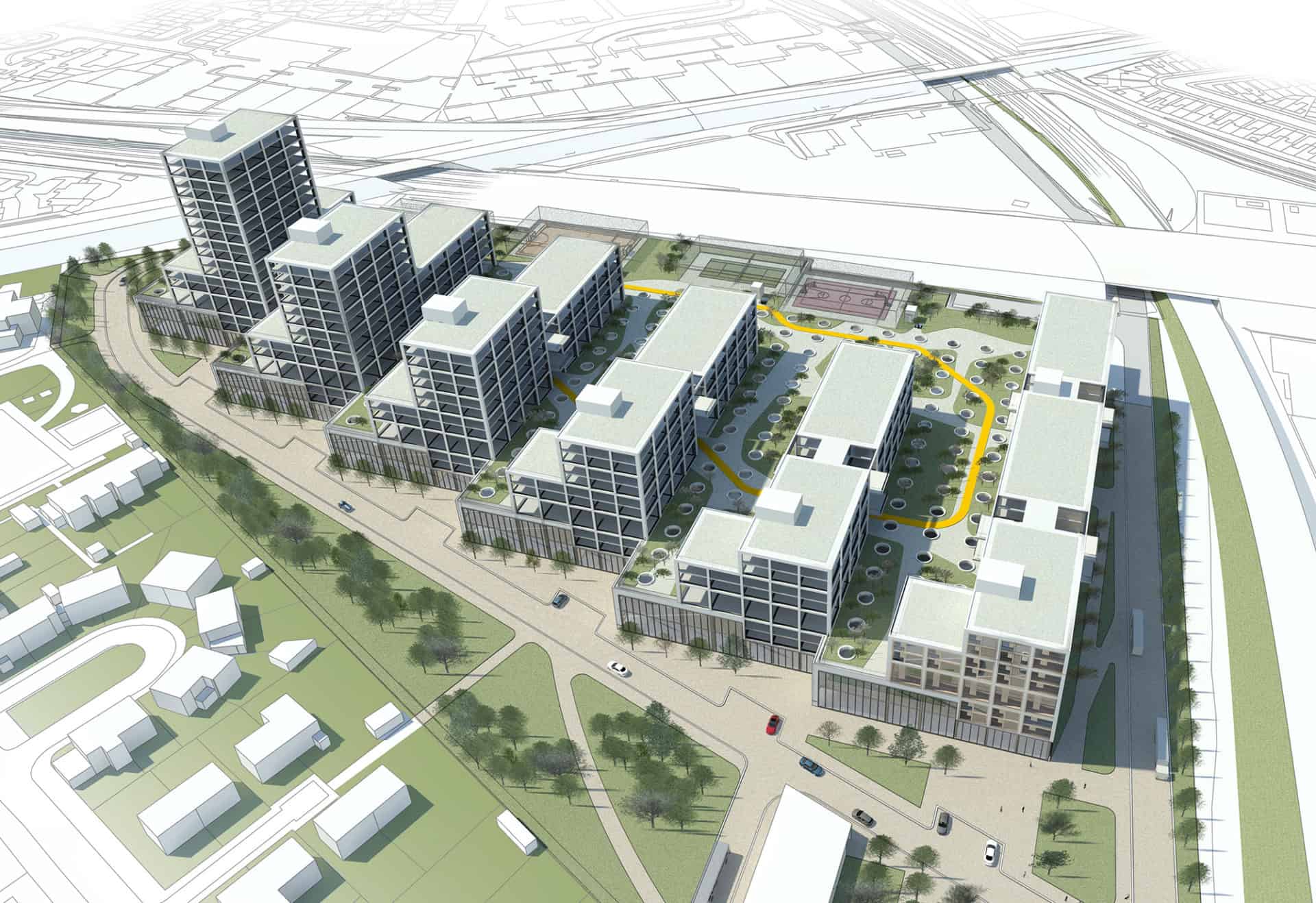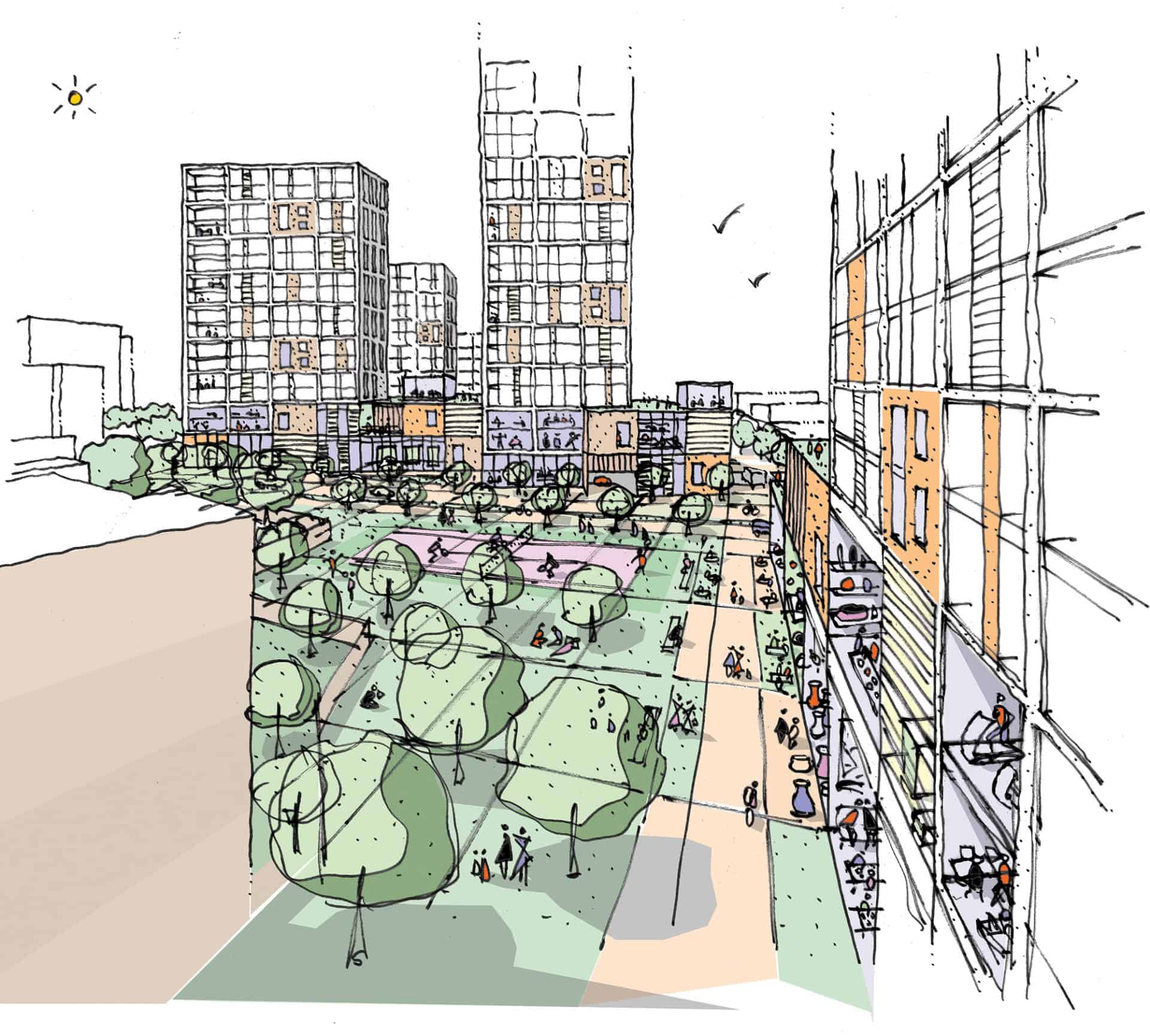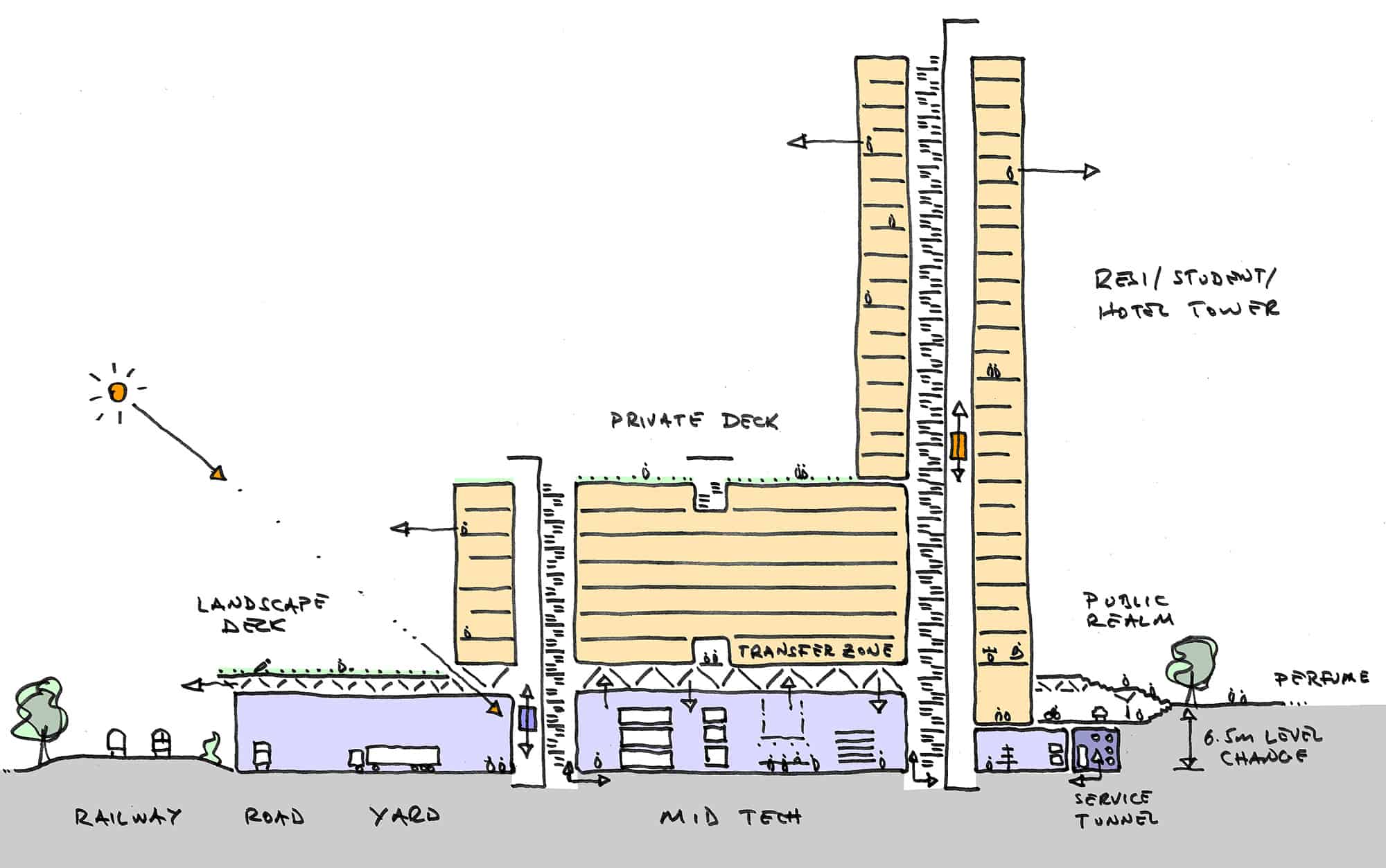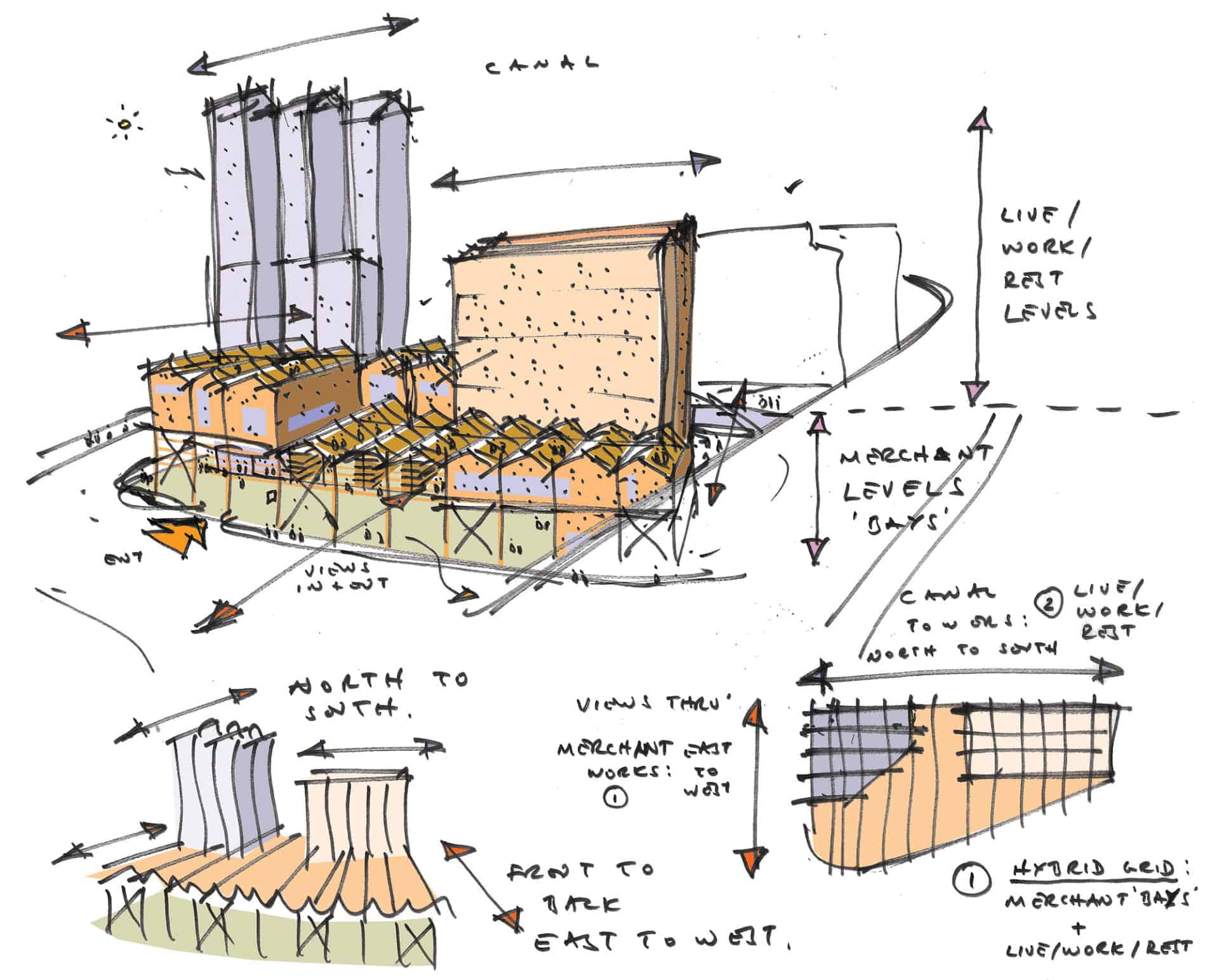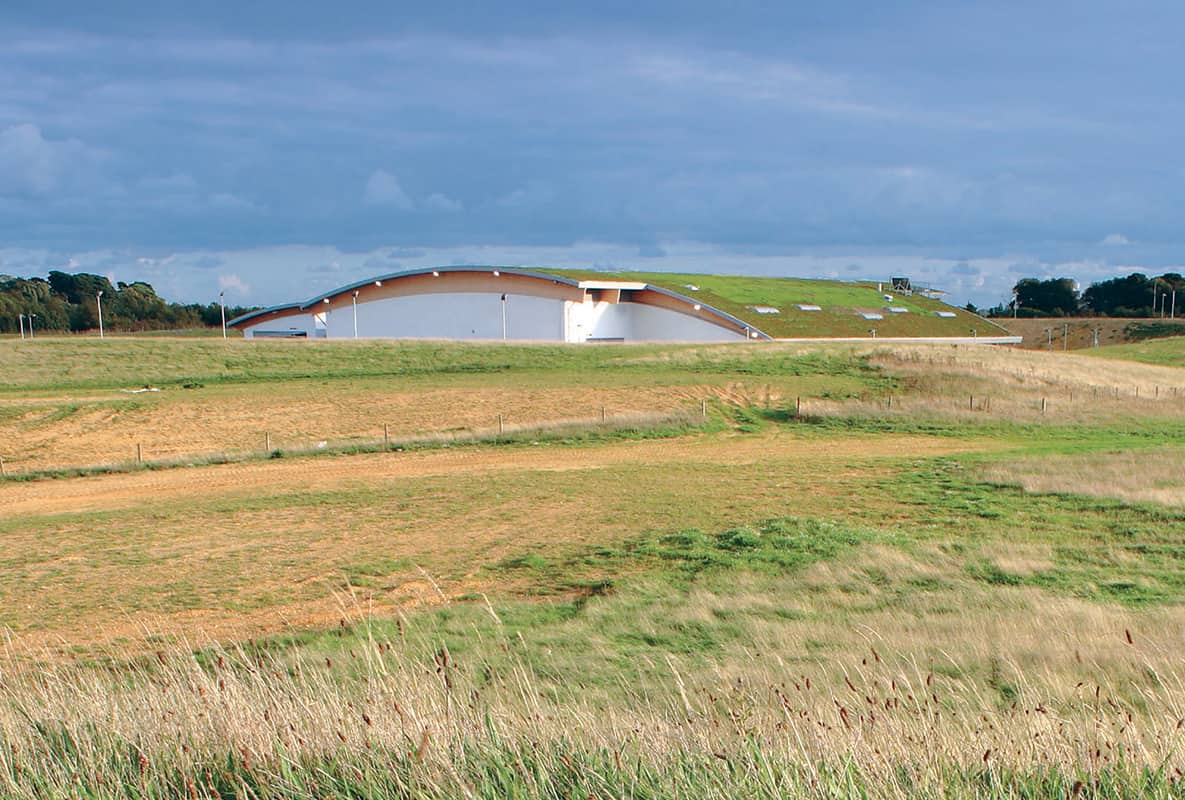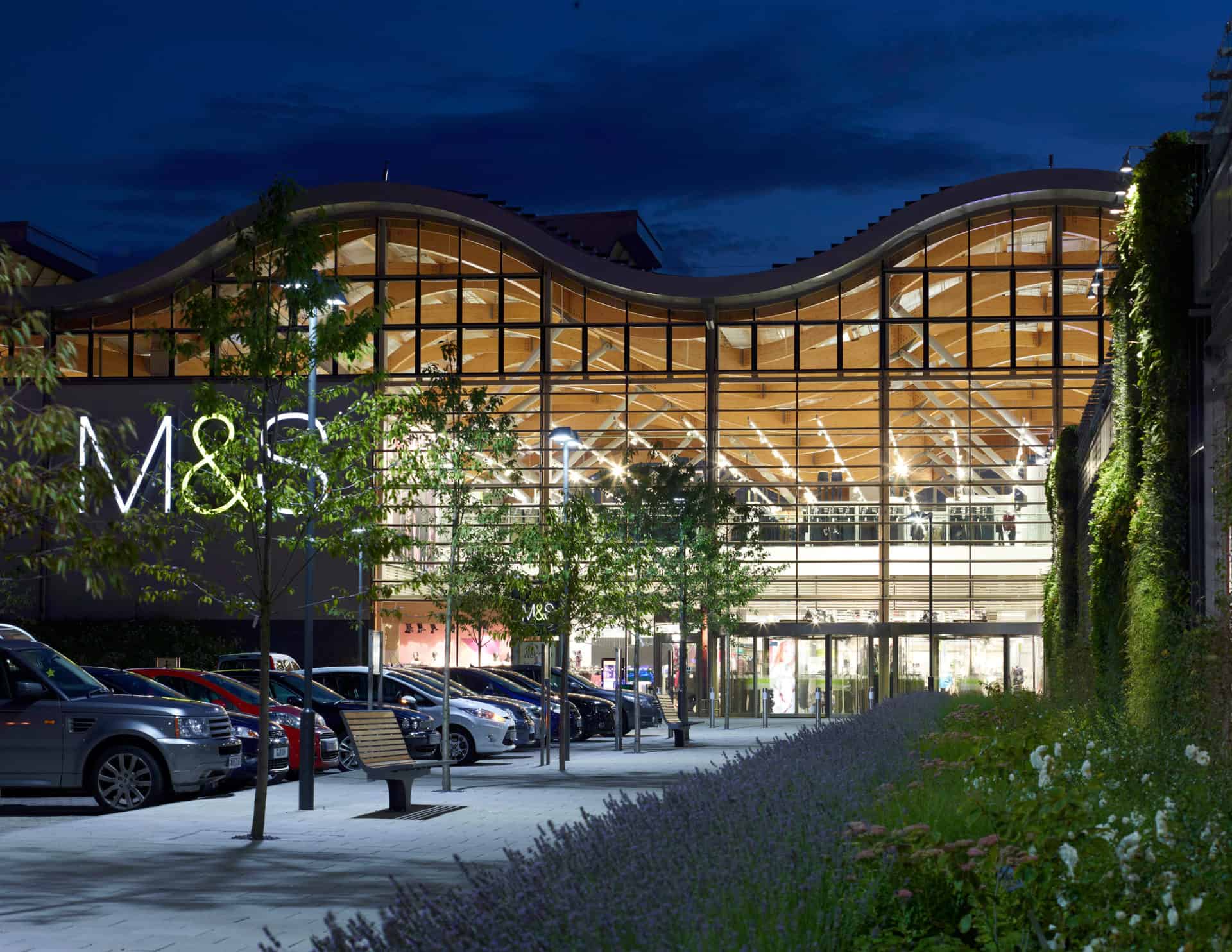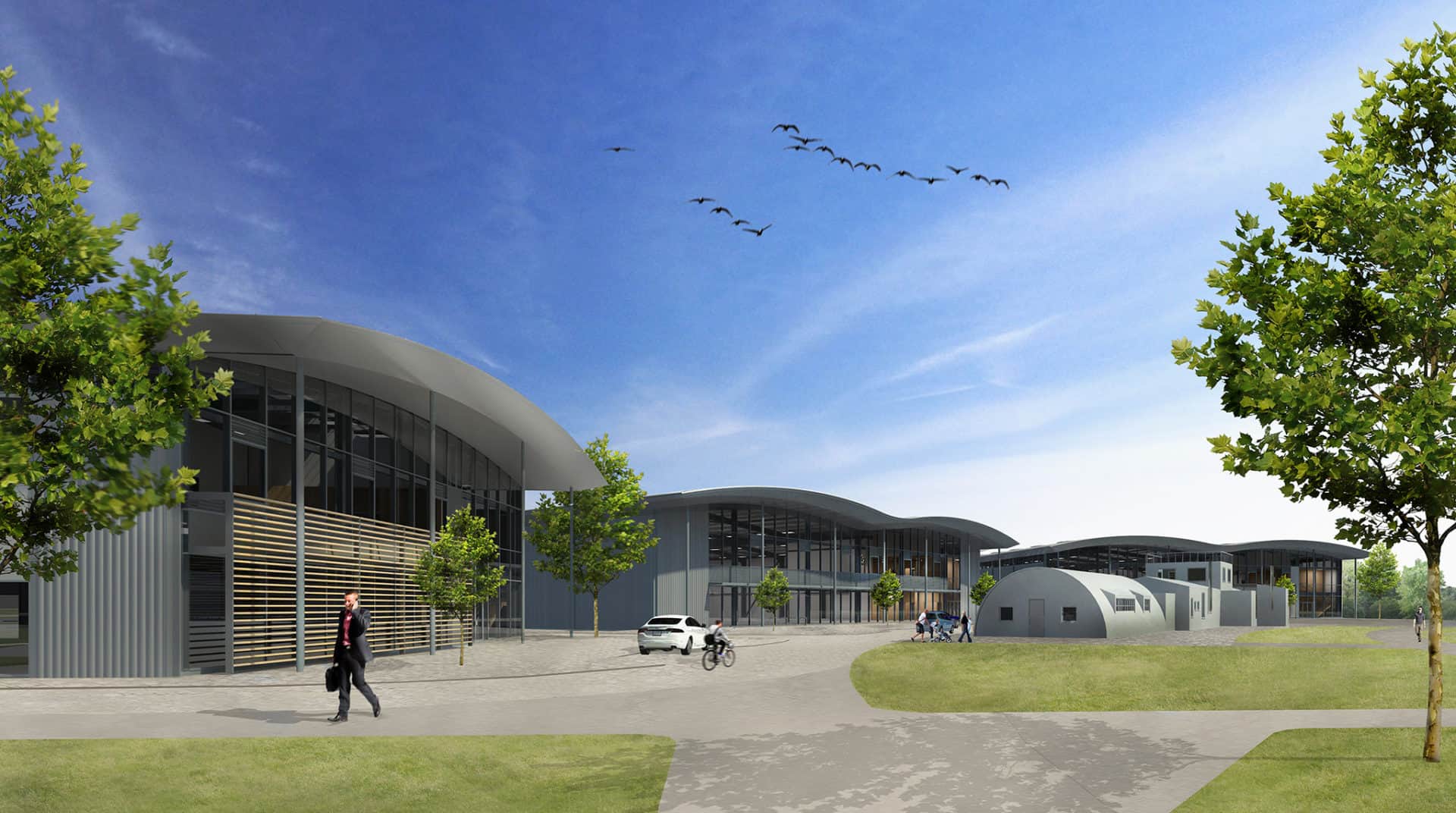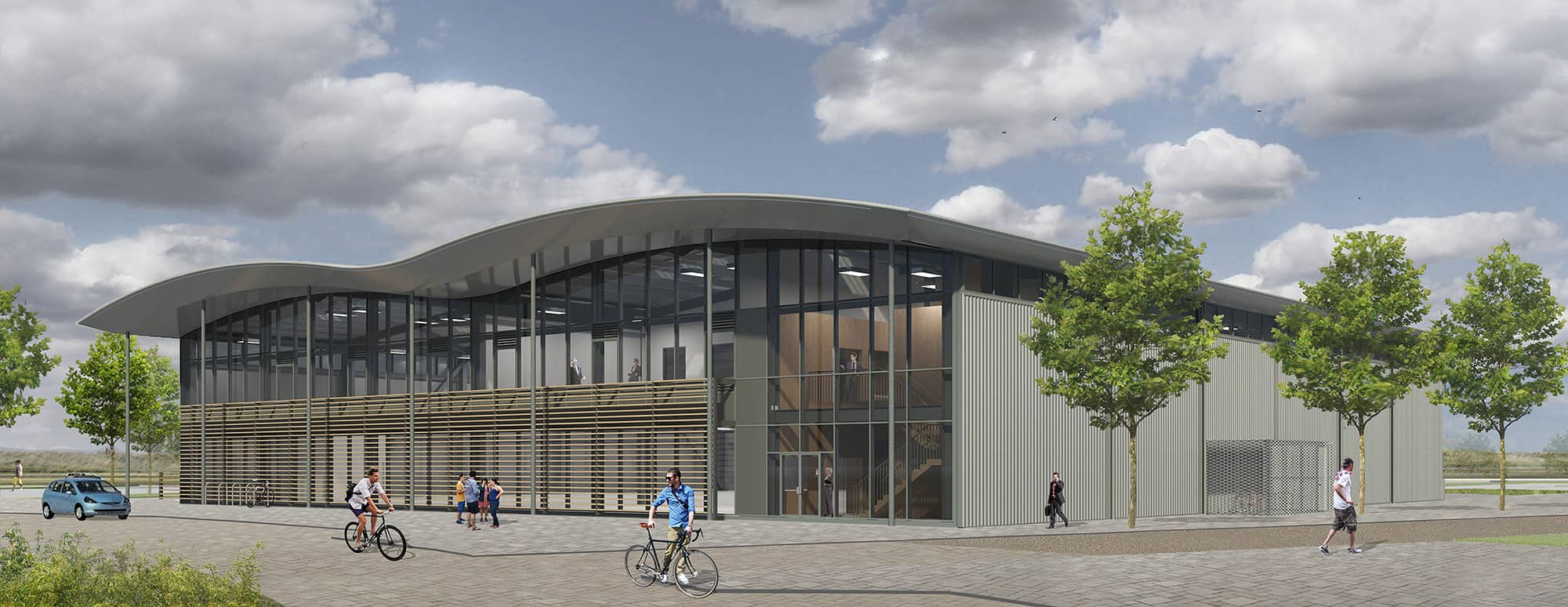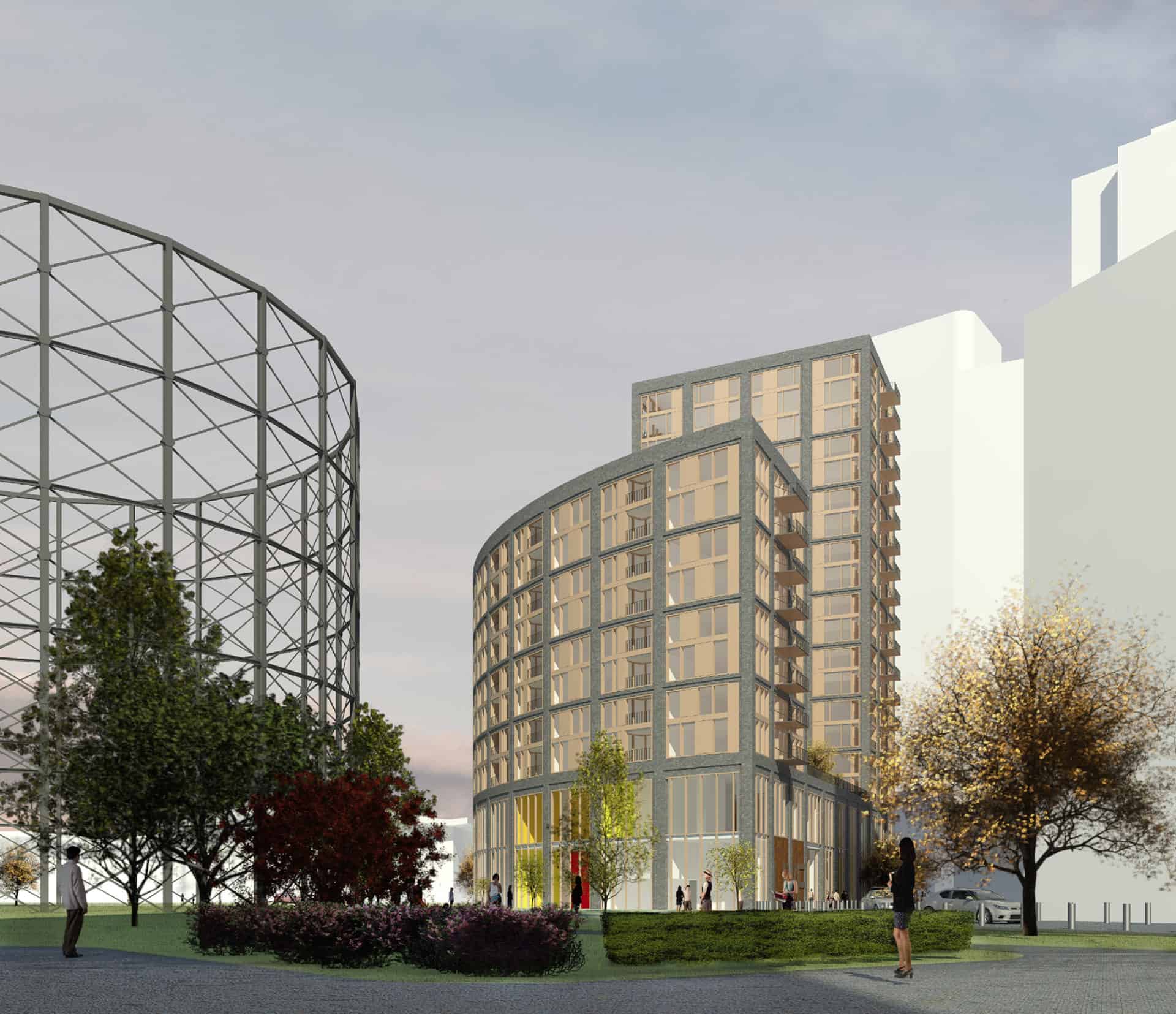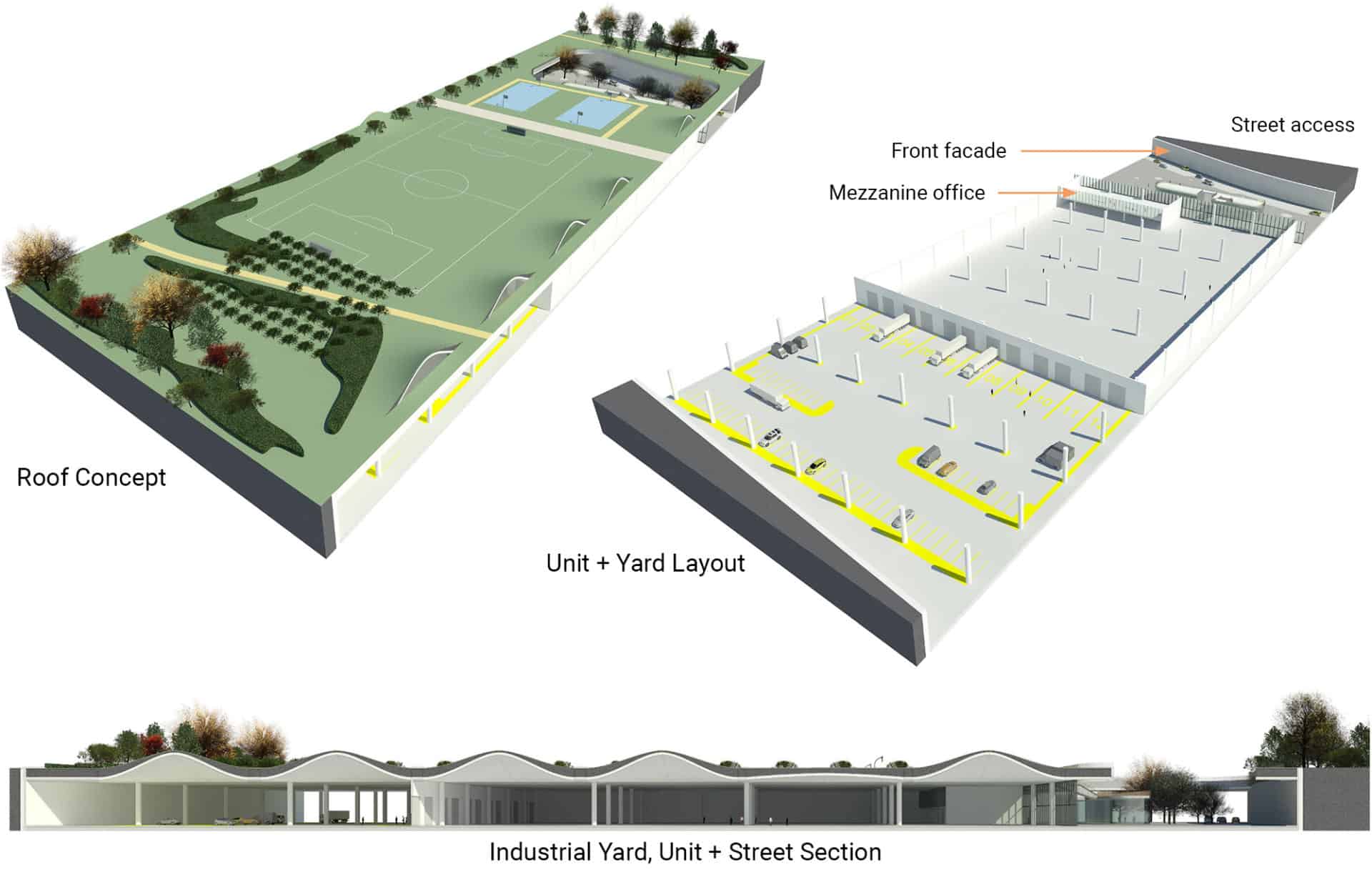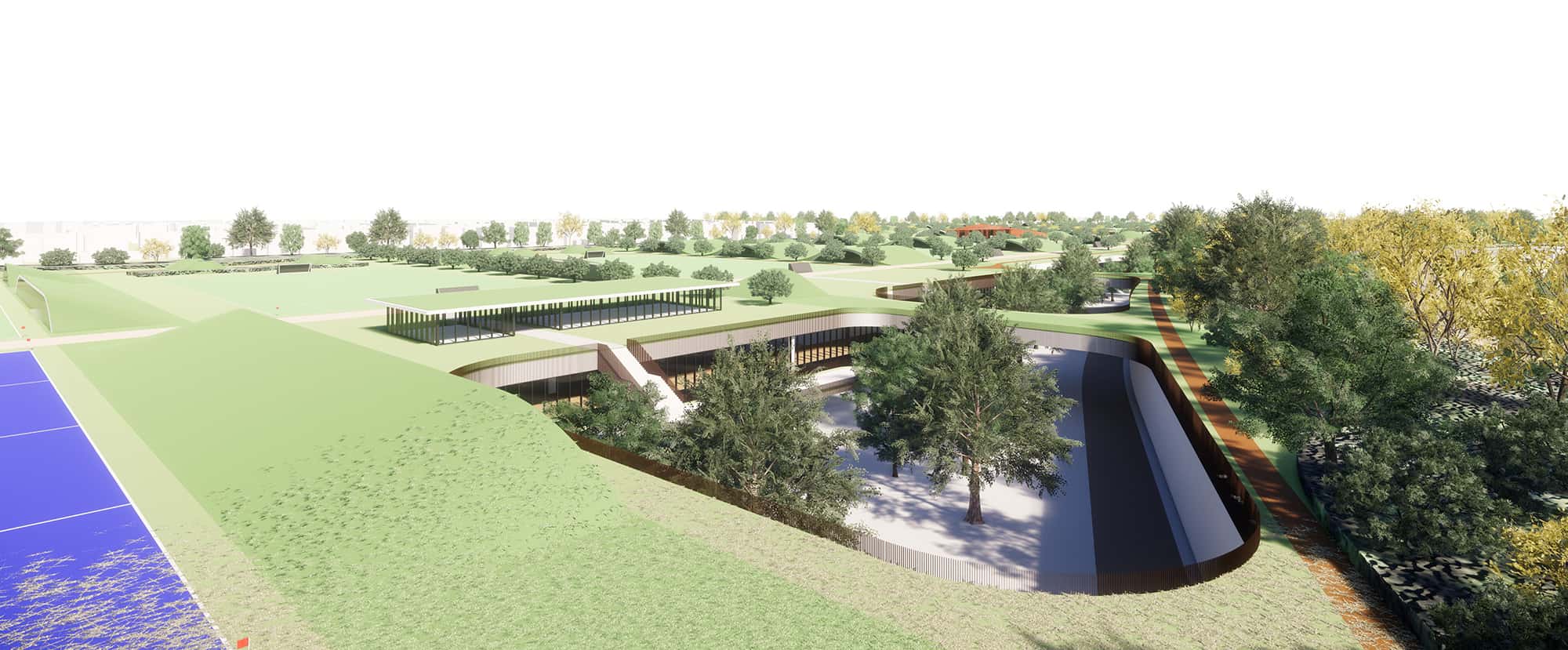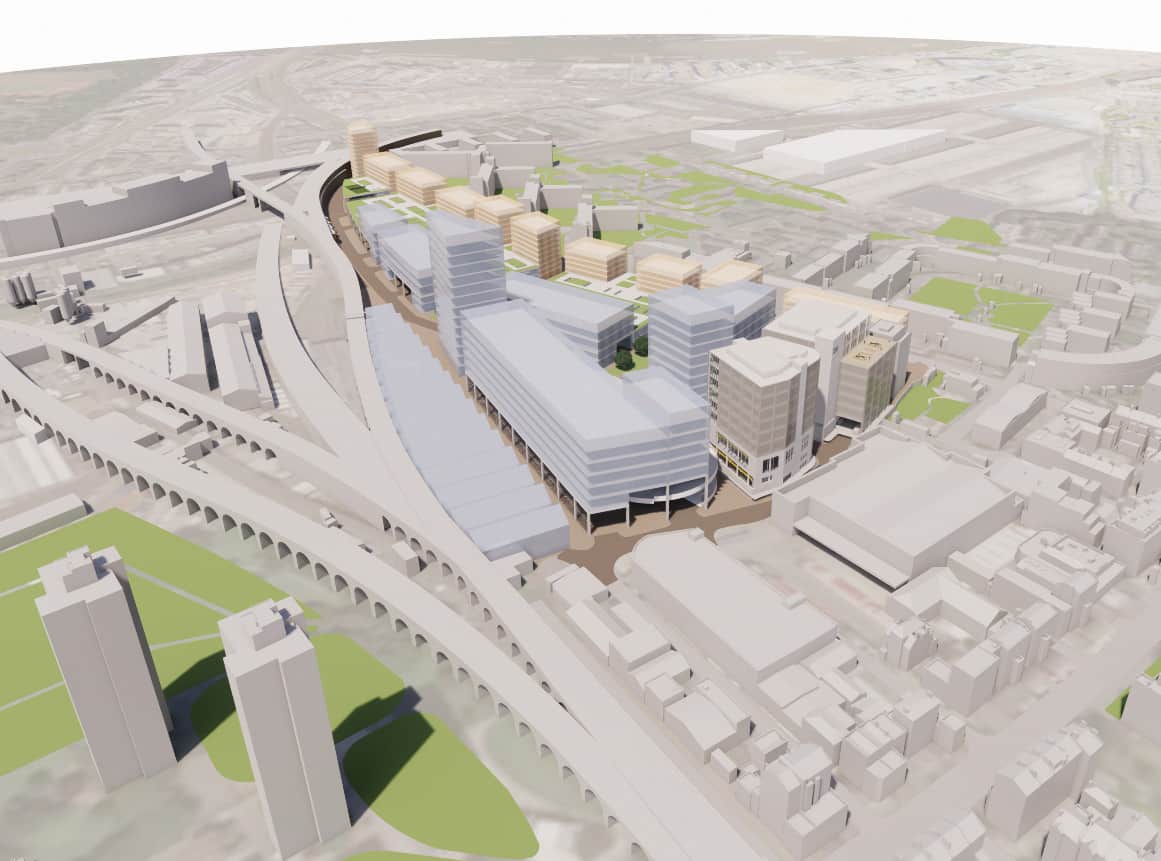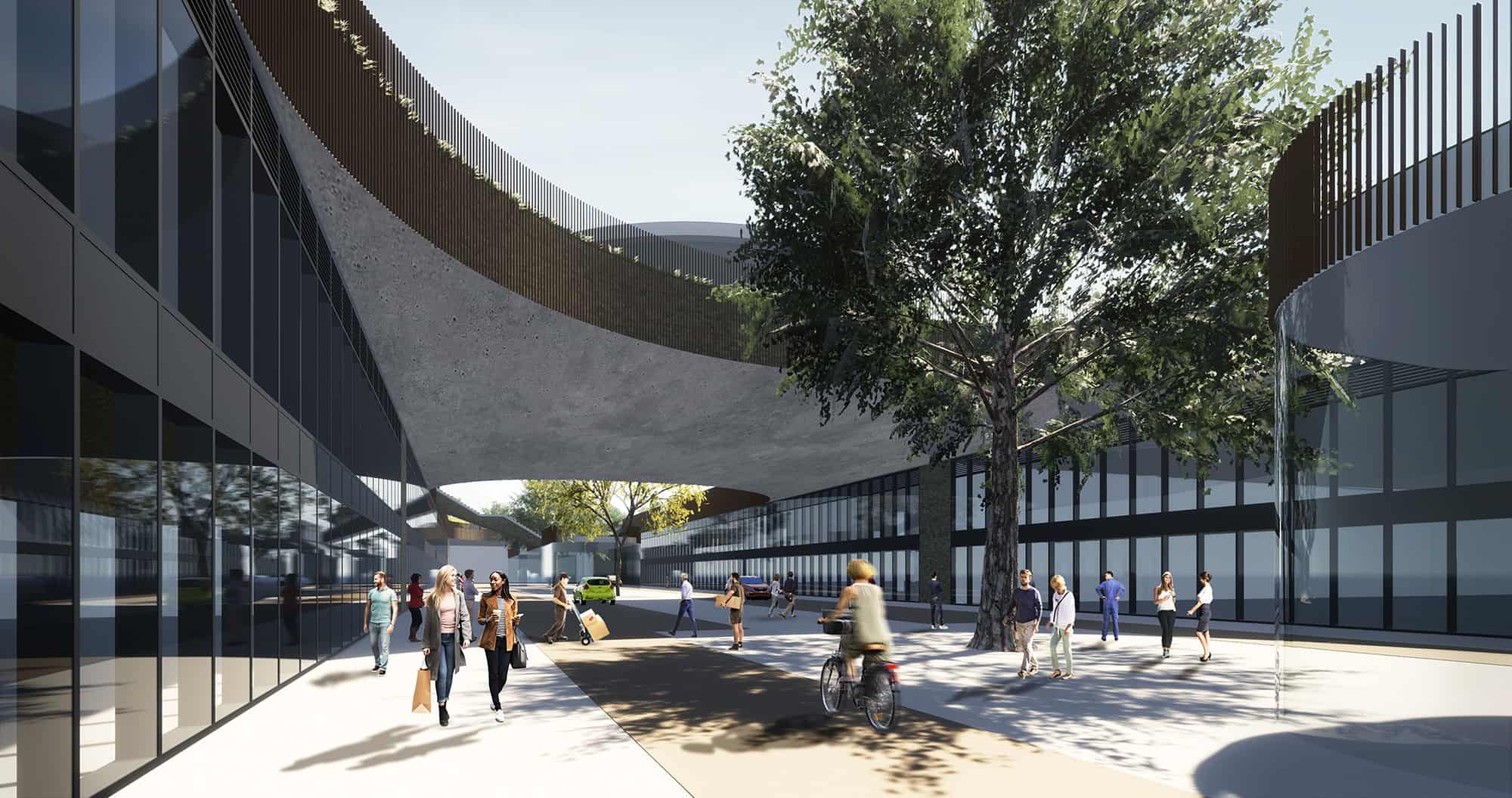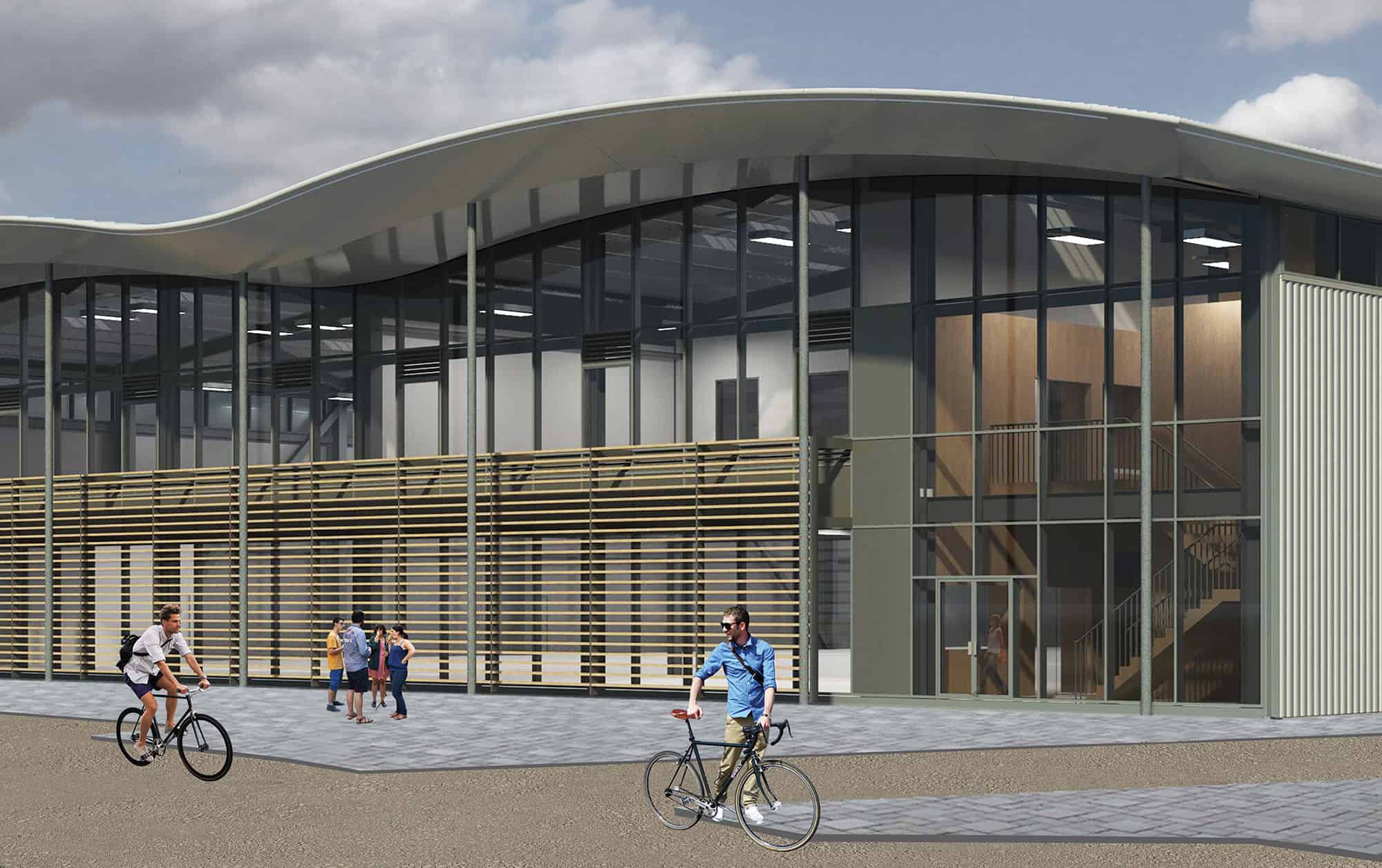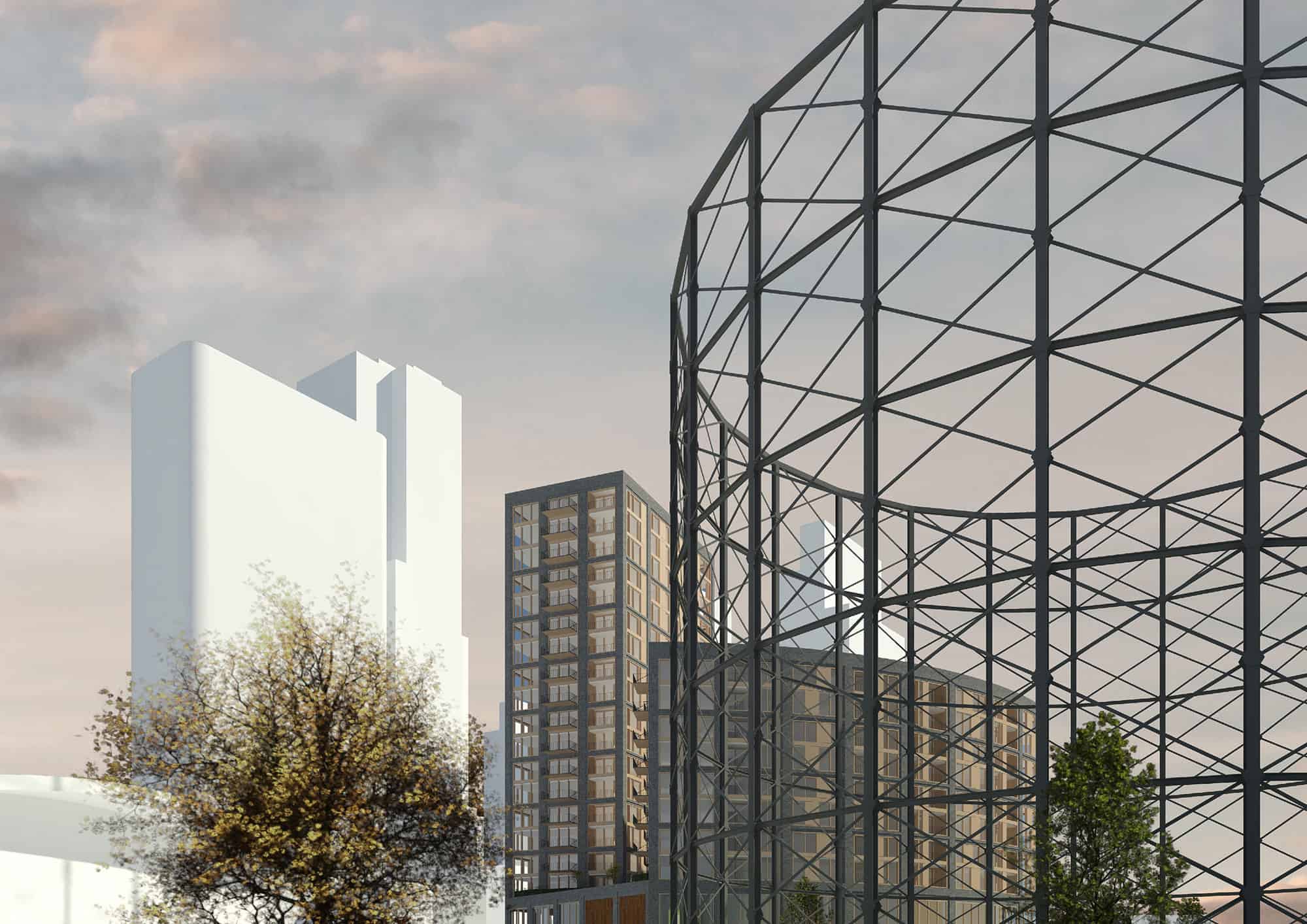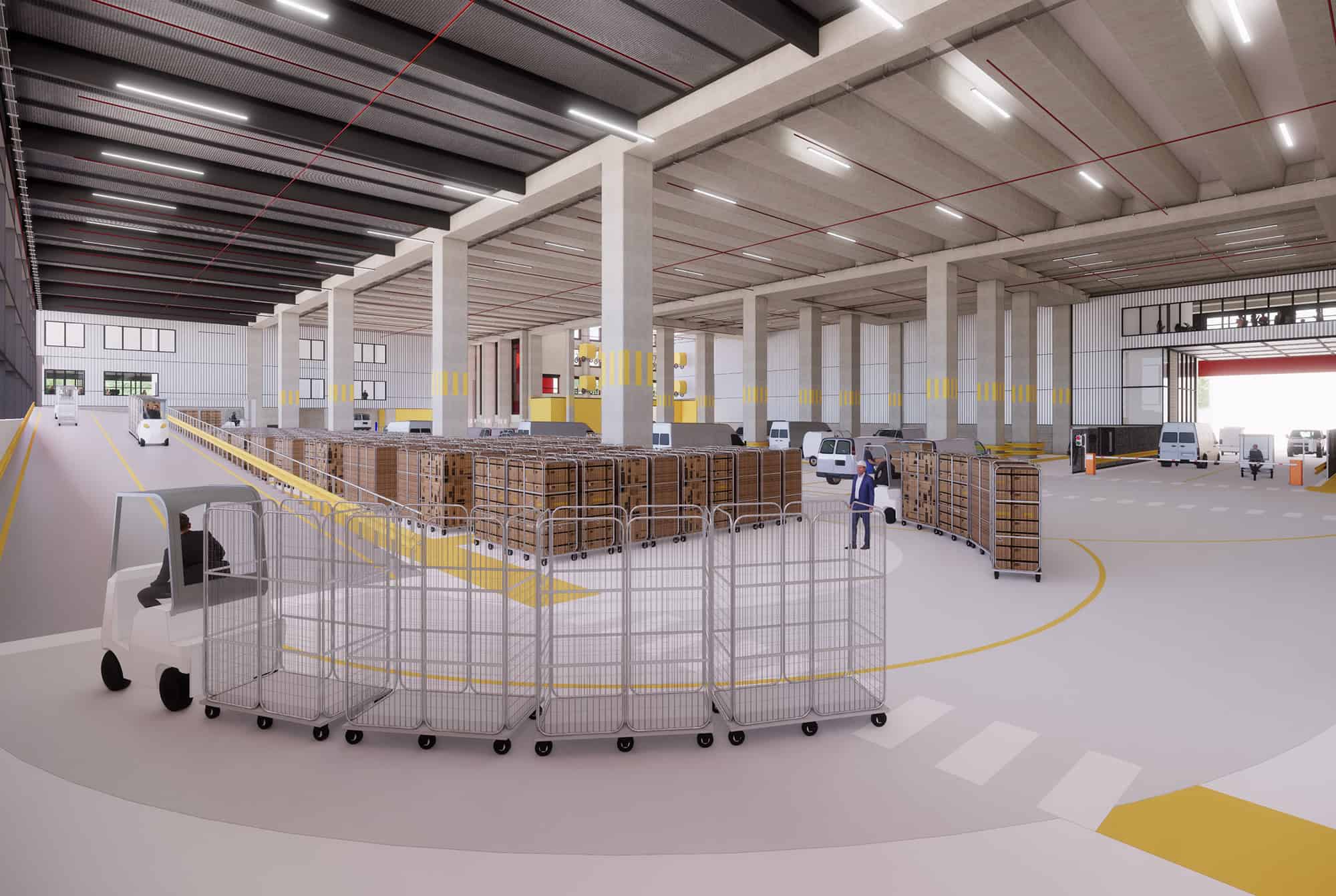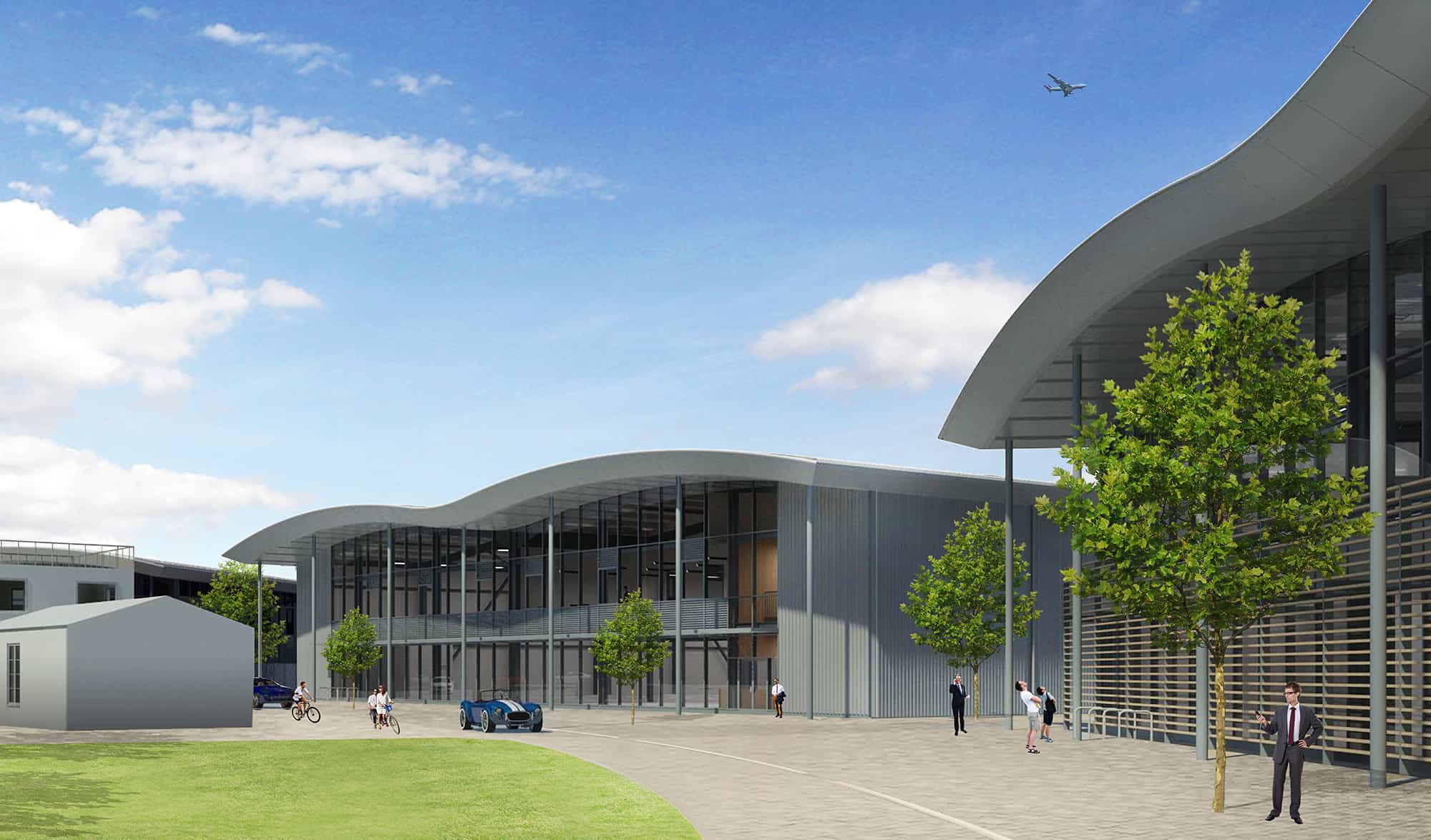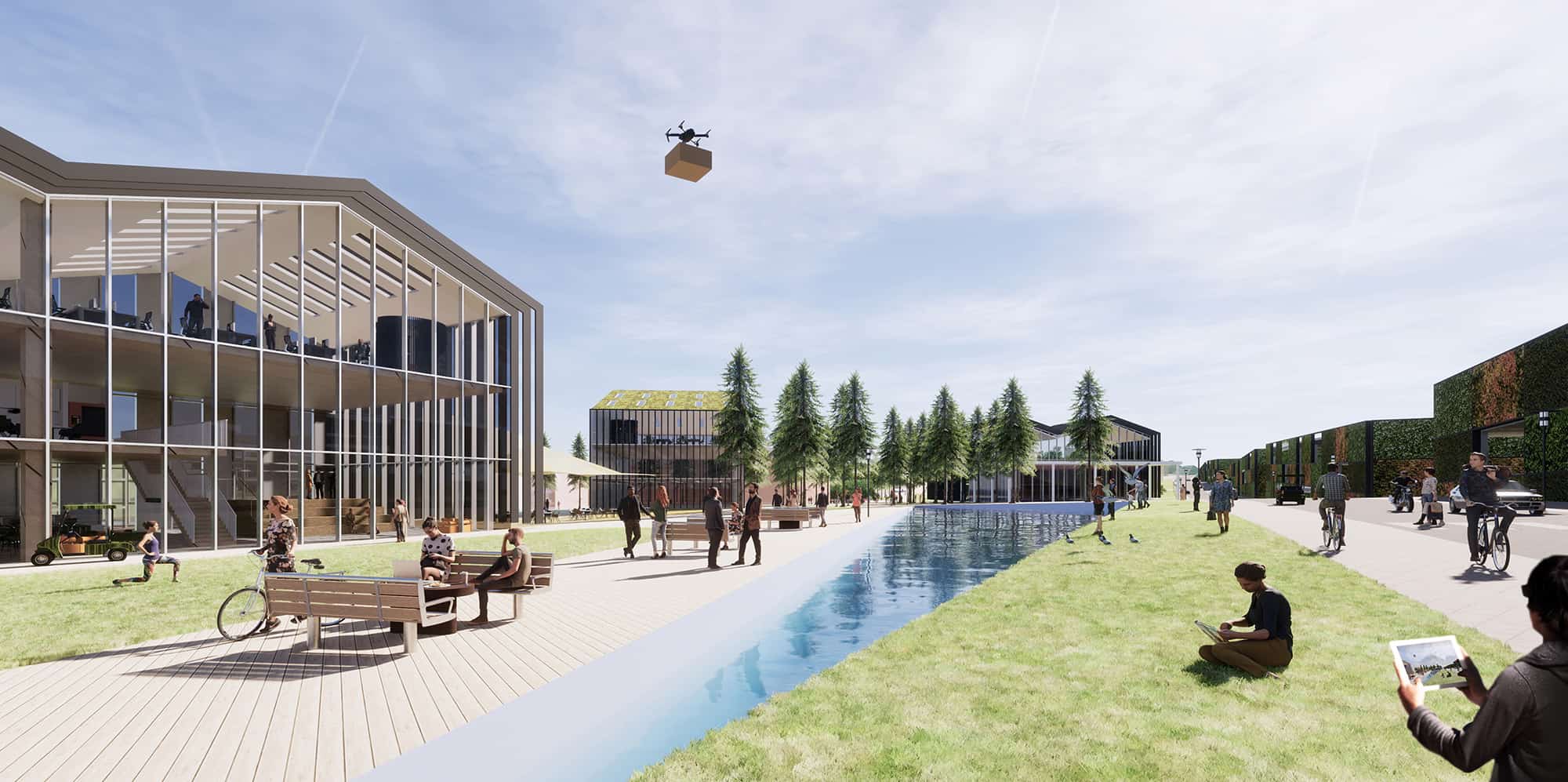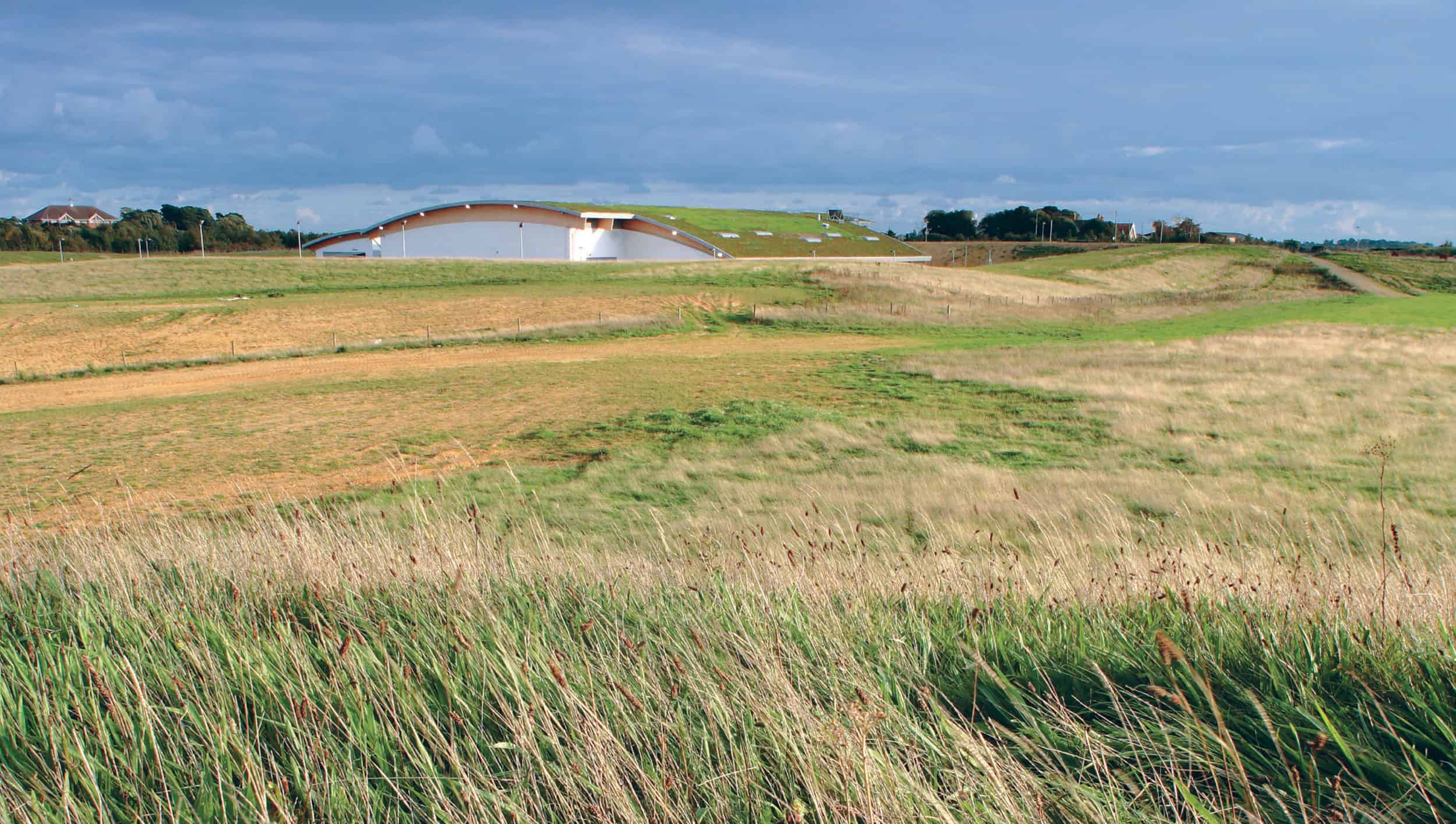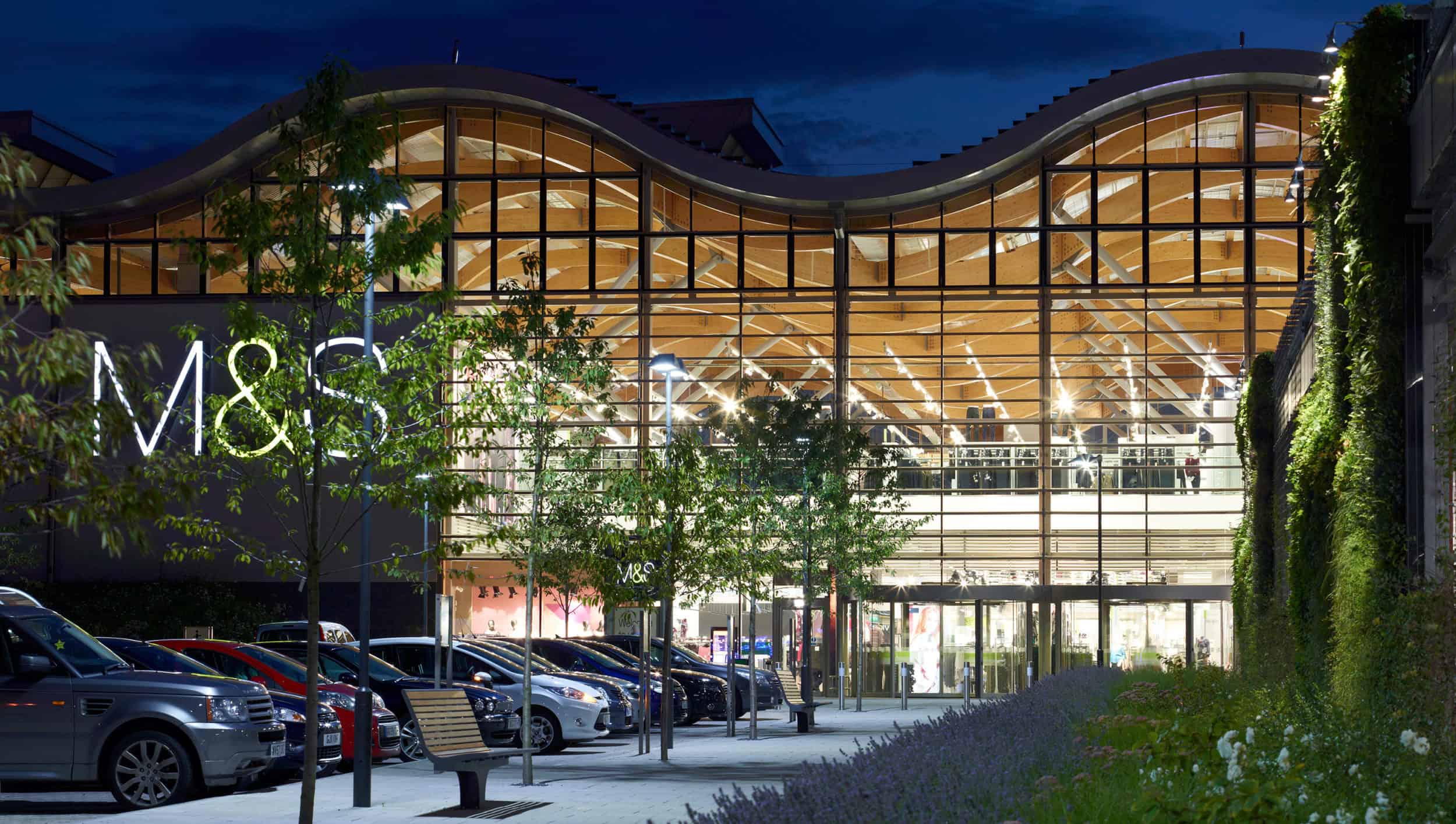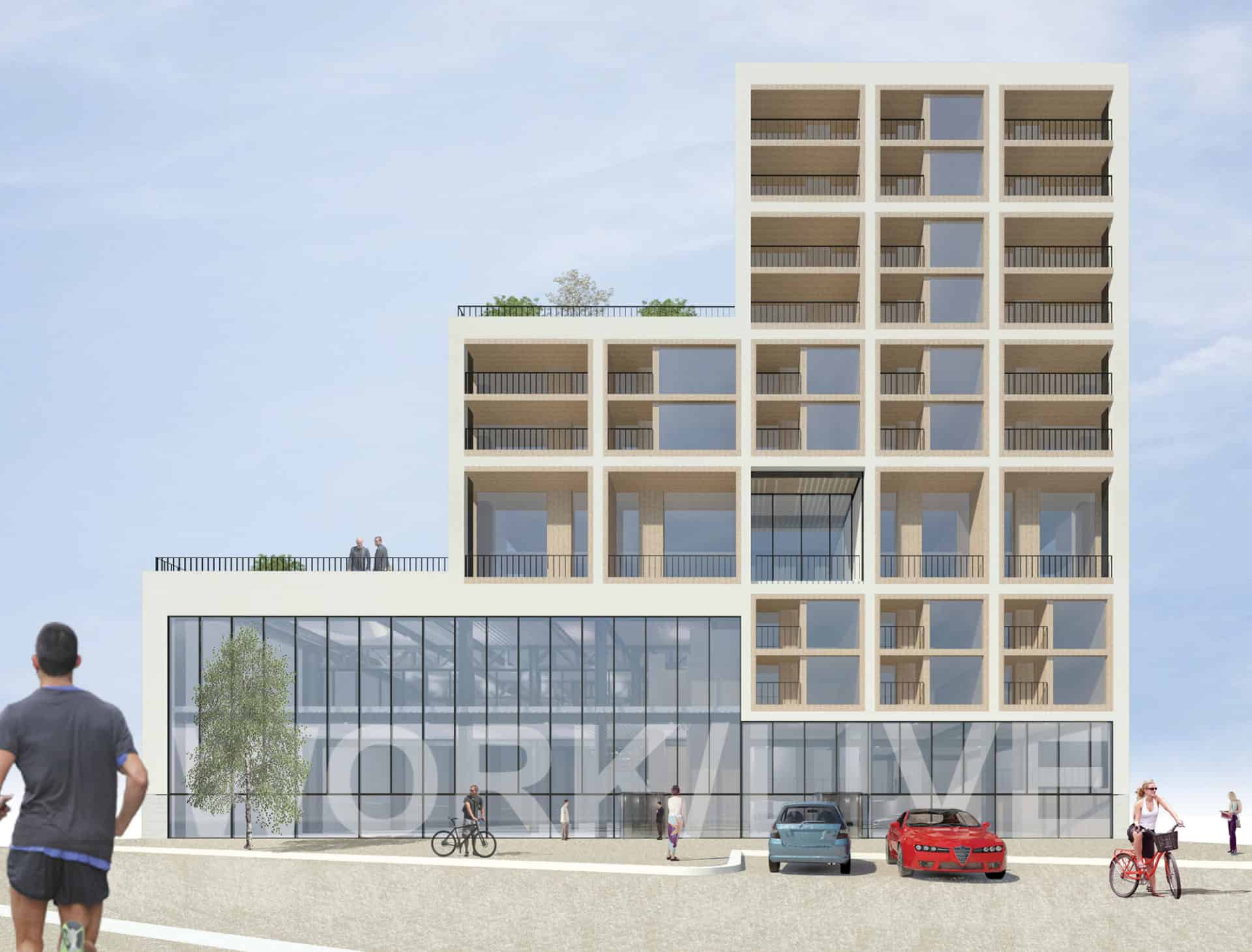
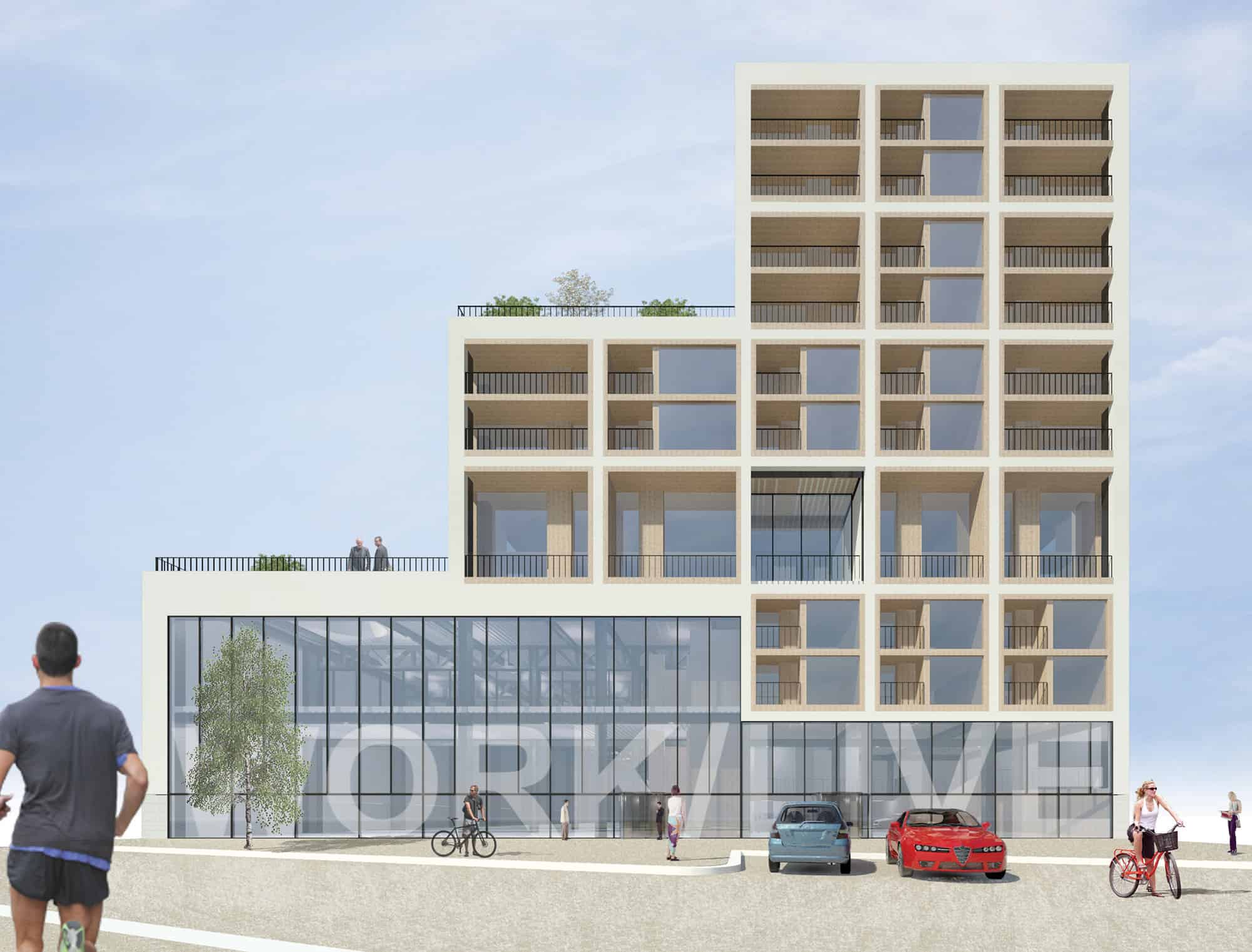
"Could you have a think about mixing industrial and residential?” we were asked by a development contact of ours...
Project Details
Collective Team
As an innovative and entrepreneurial studio we were immediately curious and naturally challenged by the concept, and put our minds to the question and started to sketch out the issues to be addressed.
Noise, pollution, access and perception emerged quickly and obviously; but so too did the realisation that the idea could create multi-levels of real estate, new aerial plots over existing ones – essentially to address the growing needs to save a city’s service buildings whilst adding to its provision of places to live.
This opportunity therefore aligns exactly with London’s ambitions at both central government and council level, whilst also revealing new levels of value to existing urban sites.
The industrial sector is booming in the UK and internationally in its traditional forms, by adding multi-level industrial buildings to the market, and with a keen interest in urban sites which are either saved or made available by a Hybrid approach.
So for the last three years, we have been exploring and developing urban intensification masterplans and mixed use buildings across London and beyond, starting with existing industrial sites and redesigning them to retain the same type of employment businesses, but then adding residential and other commercial uses.
These different typologies are blended through careful public realm design, with rigorous infrastructure strategies to keep conflicting elements apart.
Key to the innovative approach we have developed is not to compromise on the industrial design facilities or the residential experience, both needing to be as good as if not better than general market standards, with the public realm integrating the mixed inhabitants with the wider local community.
This design process takes the form of a three-dimensional and intellectually rigorous exploration of the site, brief and multi use multi-level ideas testing.
The reason we were asked the initial question about mixing uses came from the market’s knowledge of our experience of both industrial and residential architectural design. Our residential experience is extensive both in the UK and internationally, and our industrial projects include the highly sustainable reinvention of the retail shed for M&S in Cheshire, and a Distribution Centre for Adnams in Suffolk with the largest green roof in the UK on completion.
Following these projects we were asked to refresh the traditional industrial shed typology by Urban + Civic in Alconbury, Cambridgeshire. We did this by retaining the primary and highly efficient building elements of a shed and strictly adhering to the industrial tenant’s specifications, whilst improving the people experience inside and around them, integrating them more with the wider community.
Often hidden behind screens and landscape forms, we opened up the front facades to the communal spaces, putting their front doors onto the village green, whilst segregating their service routes and yards away and out of sight.
An enhanced industrial building today is like a biosphere, able to accommodate most building typologies and planning classifications. We have designed them for high and mid tech industrial uses, contemporary workplaces, education institutions, a fire department HQ and a multi-use 3D village, always providing visibility of parts of the activities inside and views out for the tenants, directly connecting the business with its community. So integrating this agile, and more outward looking, industrial building type into urban communities becomes positively feasible.
Refreshing the traditional shed into a Mid Tech was a highly significant design experience for us when looking at urban industrial sites to integrate them into newly blended areas that include residential communities. The process ignited our passion, expertise and insights into the industrial building sector and its significant potential.
The question of mixing residential and industrial led to an invitation to work with Segro on the concepts of urban hybrids, including multi level industrial and combinations of both at master planning and building scales. Our approach not to compromise on the industrial or residential designs but rather to blend their best market attributes with existing and new public realms, appealed to Segro and potential residential stakeholders.
This phase of work included developing strategies and designs on a number of large existing industrial sites, including one with Network Rail in Battersea, exploring and unlocking railway sidings, arches, bus depots, relocating batching plants and creating multi level industrial additions, and ultimately integrating new residential clusters with vital public realm routes and amenities at ground floor and podium levels.
We call this 3D master planning.
“ . . . integrating this agile and more outward looking industrial building type into urban communities becomes positively feasible”
We have now explored hybrid or intensification designs for over 40 sites across north, south, east and west London, each with different scales, characteristics and requirements, but all retaining the equivalent industrial employment levels whilst adding considerable levels of living, hotel, retail, workplace and / or additional multi level industrial accommodation. Again this is driven and blended with the public realm.
Rectory Farm, one of our more innovative project wins, near Heathrow Airport, is designing a hybrid of three million square feet of industrial use below ground with a public park above. These two communities, industrial and recreational, will be integrated to enhance and inspire each other, creating a new type of urban landscape and subterranean dwelling.
We have also been working on riverside wharf sites to retain their safeguarded status as working river-served businesses, and are currently the Hybrid Architect on Orchard Wharf in Tower Hamlets.
Our clients for these industrial intensification hybrids include Argent Related, Segro, Marcol/Isec, Royal London Asset Management, London Borough of Southwark, Network Rail, LBS, Regal London, Freshwater, Formal Investments, CBRE Global Investment, Iron Mountain, GMI, Travis Perkins and Safestore, along with a range of independent landowners.
We have also worked with a range of highly specialist consultants and contractors to challenge and test the thinking, in turn refining the design approach for key developers and landowners of both industrial and residential property.
As our hybrid design experience in London has grown we have also been invited to consider out of town sites for co-location of industrial and residential, the reinvention of science parks to include labs, workplace, industrial uses and residential provision, and recently a self-powering hydroport in Wales with vast public recreational water facilities and a landscape driven industrial region.
We believe that our design approach is exemplary and uniquely advanced for this new area of urban intensification, supported by many of London’s key stakeholders. This approach is also naturally exportable so we are open to exploring the value and enhancement of previously unseen potential on international sites.
So the answer to the question was a resounding "yes, we will consider Hybrid Design"- we did, and we continue exploring and developing our designs in London and further afield
This article first appeared in the 2019 Aukett Swanke Group Plc Annual Report and Accounts. It describes our recent research into mixed-use, multi-level developments combining industrial / residential and other uses to address the growing needs to save a city’s service buildings while creating new provision of places to live, work and play.
